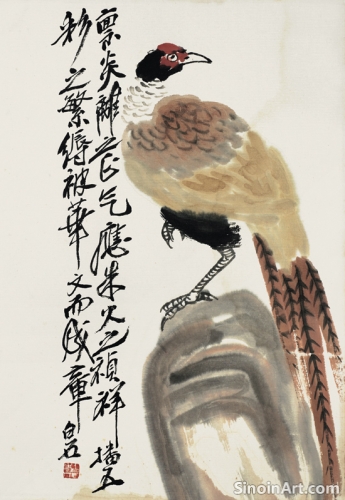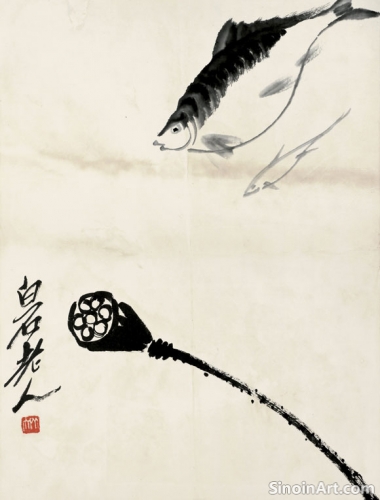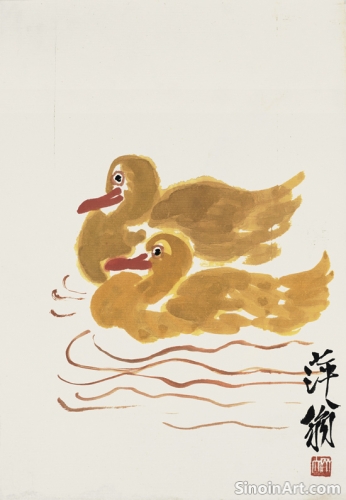The Influence of Literati Painting on Xieyi
|
The development of Xieyi painting is inextricably linked to the tradition of literati painting (wenrenhua). Literati painters, who were scholar-officials, poets, and calligraphers, viewed painting as a means of personal expression and intellectual cultivation, rather than merely as a form of decoration. Their philosophy had a deep influence on the development of Xieyi.  Literati painting emphasized the importance of personal feeling, spontaneity, and the pursuit of the essence of things. Artists aimed to express their inner thoughts and emotions through the language of ink and brush, rather than meticulously depicting the outer world. This focus on inner expression is a core principle of Xieyi. It was a deliberate departure from realism.  The practice of calligraphy was integral to literati painting, as the same tools and techniques used for writing Chinese characters were employed in painting. This emphasis on calligraphic brushwork became a defining characteristic of both literati painting and Xieyi. The artistic language was unified across multiple forms of expression.  Literati painters often incorporated poetry into their artworks, further blending the visual and literary arts. They sought to convey their feelings and ideas through a combination of painting, calligraphy, and verse, creating a holistic artistic experience. This combination of disciplines is a key characteristic of the literati tradition. The aesthetic ideals of the literati – simplicity, naturalness, and a deep appreciation for the natural world – continue to influence Xieyi painting today. The desire to harmonize with nature, rather than dominating it, is a legacy of the literati tradition. It remains a driving force behind contemporary art. |
Tag : Literati painting, wenrenhua, scholar painting, calligraphic art, Chinese aesthetic
Related information
- The Use of "Multiple Brushstrokes" in Xieyi
- The Role of the Inkstone in Xieyi
- Xieyi Painting and the Concept of "Gu Yi"
- The Use of Ink and Water in Xieyi Technique
- Xieyi Painting and the Concept of "Ziran"
"Multiple Brushstrokes" (cūn fǎ) are essential in Xieyi landscape painting, offering a variety of textured strokes that create a sense of depth, form, and visual complexity, requiring skill and strategic layering to depict mountains, rocks, and trees, adding dynamism and guiding the viewer’s eye through the composition.
The inkstone (yàn) is a vital part of Xieyi painting, influencing the quality and texture of ink, and serving as an object of both practical use and beauty, representing a key part of the ritual of painting and connecting the artist to tradition.
"Gu Yi" (ancient intention) in Xieyi emphasizes an artist's engagement with tradition, seeking to absorb the spirit and principles of past masters, studying their techniques and cultural context to create work that honors the legacy of the art form and contributes to its ongoing evolution.
The control of ink and water is fundamental to Xieyi painting, allowing for a vast range of tonal values, textures, and expressive effects. Understanding how these elements interact is essential to mastering the techniques.
"Ziran" (naturalness) is a cornerstone of Xieyi painting, emphasizing effortless ease, rejection of artificiality, and a profound connection with the natural world, requiring an understanding of materials and authenticity in personal expression, allowing the art process to unfold organically.